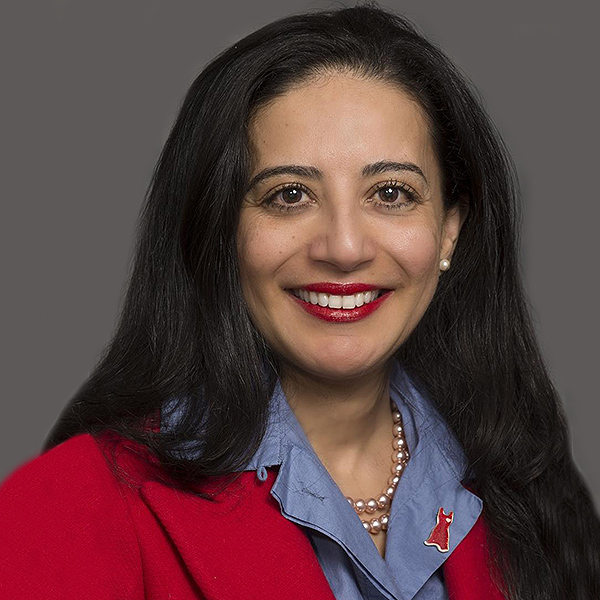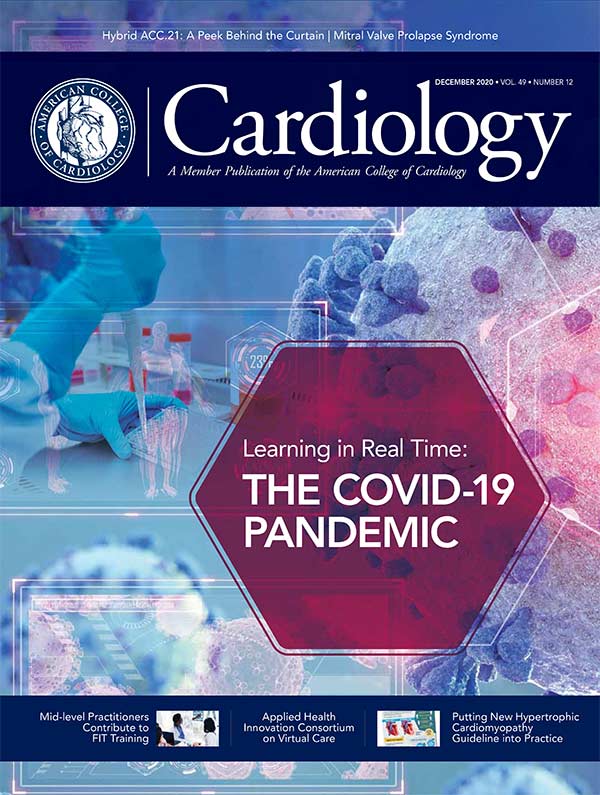Innovation at ACC | Virtual Care: Moving Forward Together

The ACC's Applied Health Innovation Consortium (AHIC), a unique multidisciplinary group driving the thought leadership and evidence for the application of artificial intelligence (AI) and digital technology in a clinically meaningful way in cardiovascular medicine, held its first Summit, virtually, in October.
The Summit convened a multistakeholder group to identify gaps in knowledge and implementation and develop a strategic plan to optimize virtual care for patients with heart failure, atrial fibrillation and those requiring post-acute care.
"Collaboration is an essential part of digital transformation," said John S. Rumsfeld MD, PhD, FACC, ACC's chief innovation officer and chief science and quality officer, who kicked off the Summit along with ACC Vice President Dipti Itchhaporia, MD, FACC.
Both Rumsfeld and Itchhaporia talked about the alignment of AHIC's efforts with ACC's Strategic Plan and the goal of creating actionable knowledge and noted the importance of bringing together industry (life science, device, technology), clinicians, hospitals/health systems, patient/consumer advocacy, and other health care stakeholders to ultimately develop projects to best drive the digital transformation of health care and thereby support the shift toward virtual care, remote monitoring and AI-driven care.
The Summit featured a closer look at definitions of virtual care and an overview of ACC Advocacy efforts in the digital health space. A panel discussion led by Sanjeev P. Bhavnani, MD, FACC, provided an opportunity to deep dive into the ways current events, including the COVID-19 pandemic, have created unprecedented demand for virtual care.
Small breakout sessions moderated by work group members, Jai Nahar, MD, MBA, Associate Fellow of ACC; Sherry-Ann Brown, MD, PhD; Andrew M. Goldsweig, MD, FACC; Khurram Nasir, MD, MPH, FACC; Aditi Nayak, MBBS; and Heba S. Wassif, MD, MPH, FACC, offered opportunities for focused discussions on the benefits and limits to virtual care possibilities, as well as how best to apply virtual care more broadly.
Among the key messages from the Summit:
- There is strong support for developing standards for virtual care, and for agnostic platforms and software.
- The group recognized a need to optimize technology and capacity to integrate various wearables in a safe and secure manner.
- Design of any virtual program must be tailored to the target population, with an understanding of community dynamics and the culture of the users.
- There is a need to identify accurate and quality-based apps and devices, perhaps through a curated list, to assist clinicians and patients. Just for hypertension alone, there are 160 apps currently in the Apple store, illustrating the plethora of applications that leave clinicians and patients confused.
- Measurable telehealth metrics are needed, and possible quality metrics could include access, equality and convenience.
- Hybrid models of care are envisioned as the future of health care delivery.
In addition to these key messages, participants also noted that while virtual care provides solutions, there are costs for implementation and a longer-term impact on revenue for various institutions with current models of reimbursement.
These remain barriers to invest in the emerging technologies for virtual care. Validation studies, registry data, real implementation practices, and case use examples are required to support the feasibility and safety of these models.
Participants suggested the development of a "Best Practices" document for virtual care in cardiac rehab/telemedicine could be a useful resource from the College.
Health care disparities for women and disadvantaged communities also were discussed. The impact of limited broadband access, along with limits on time and personal financial resources, further contribute to these disparities.
Participants highlighted the challenges with overcoming disparities without addressing patient access. Advocacy in support of the Broadband Community Act, intended to promote affordable broadband access by allowing municipal governments to provide telecommunications capability and services, was one suggested course of action.
The pivotal role of the ACC and other societies in guiding industry was noted by Jeffrey Wessler, MD, MPhil, founder and chief executive officer of Heartbeat Health. While the technologies for virtual care are developed by for-profit companies, this partnership is important.
He shared, "It's not about engagement, it's about introducing a quality standard." By shining a light on companies working to reduce and end health disparities, there will be positive changes with others following that lead.
Looking ahead, AHIC leaders plan to use the outcomes from the Summit to continue moving forward in a collaborative, multidisciplinary fashion to determine the scope of activities and set a strategic plan of action.
Clinical Topics: Arrhythmias and Clinical EP, COVID-19 Hub, Atrial Fibrillation/Supraventricular Arrhythmias
Keywords: ACC Publications, Cardiology Magazine, Healthcare Disparities, COVID-19, Local Government, Atrial Fibrillation, Consumer Advocacy, Artificial Intelligence, Benchmarking, Leadership, Vulnerable Populations, Subacute Care, Subacute Care, Feasibility Studies, Goals, severe acute respiratory syndrome coronavirus 2, Telemedicine, Innovation
< Back to Listings


